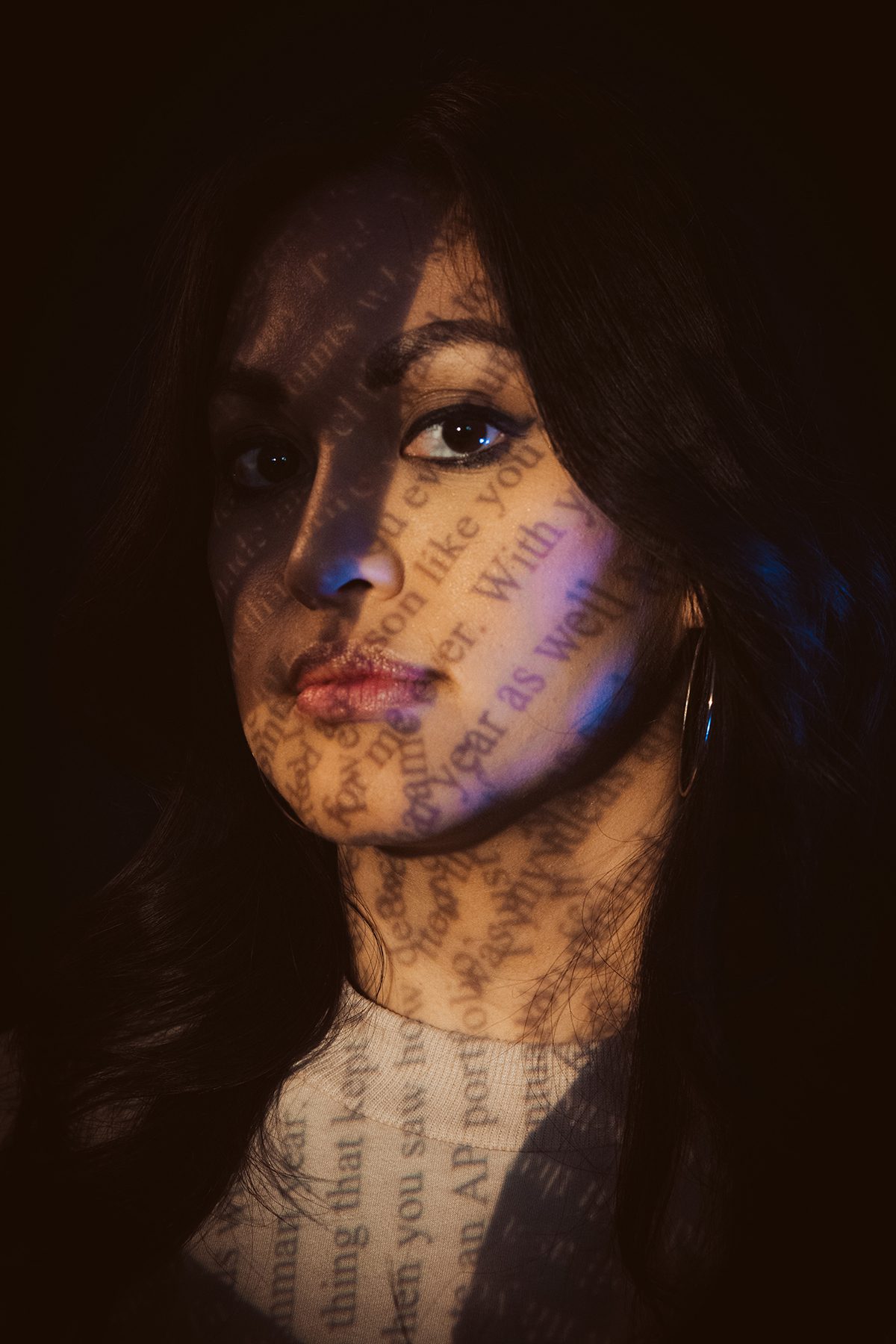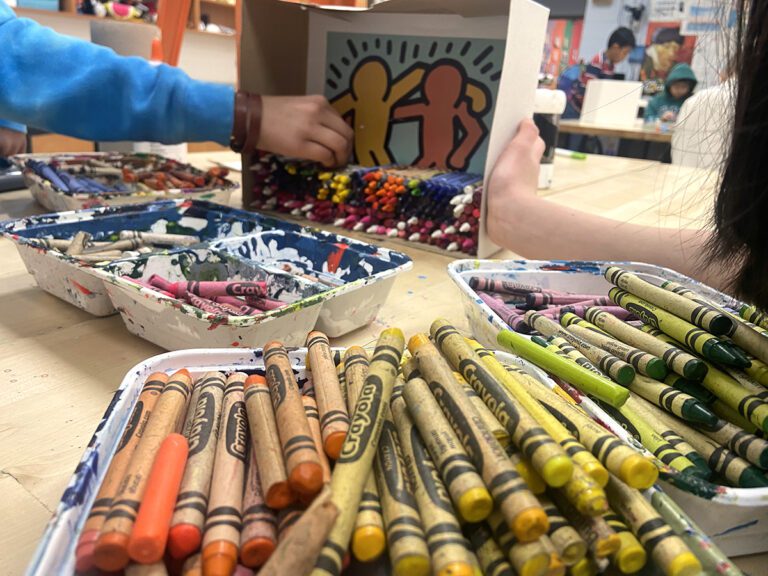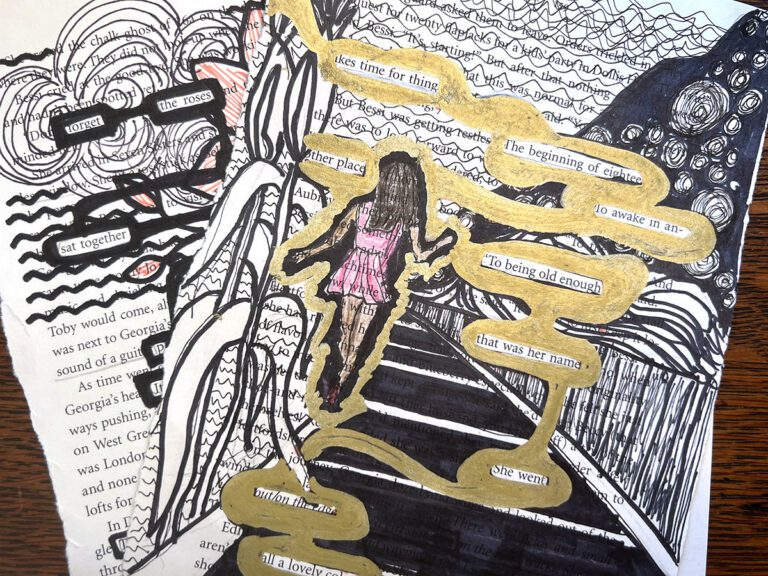Note: Be sure to review all resources and preview all artists before determining if they are appropriate to share with your students.
How often have you heard your students say, “I don’t know why I made it. I just did.” We’ve all been there, even as artists ourselves. The artistic process is more than creating visual imagery and a final product. It’s also about the journey of introspection, personal expression, and exploration. Getting students to get deep and meaningful about their artwork takes a lot of scaffolding and confidence-building. One surefire way to do this is through poetry. Poetry in the advanced art room offers students a familiar entry-level activity that will guide them into gaining more depth and breadth in their work.
If you’re looking for a way for your advanced students to get deeper in their artmaking process and find their artistic voice, discover why poetry is the answer and how to implement it!
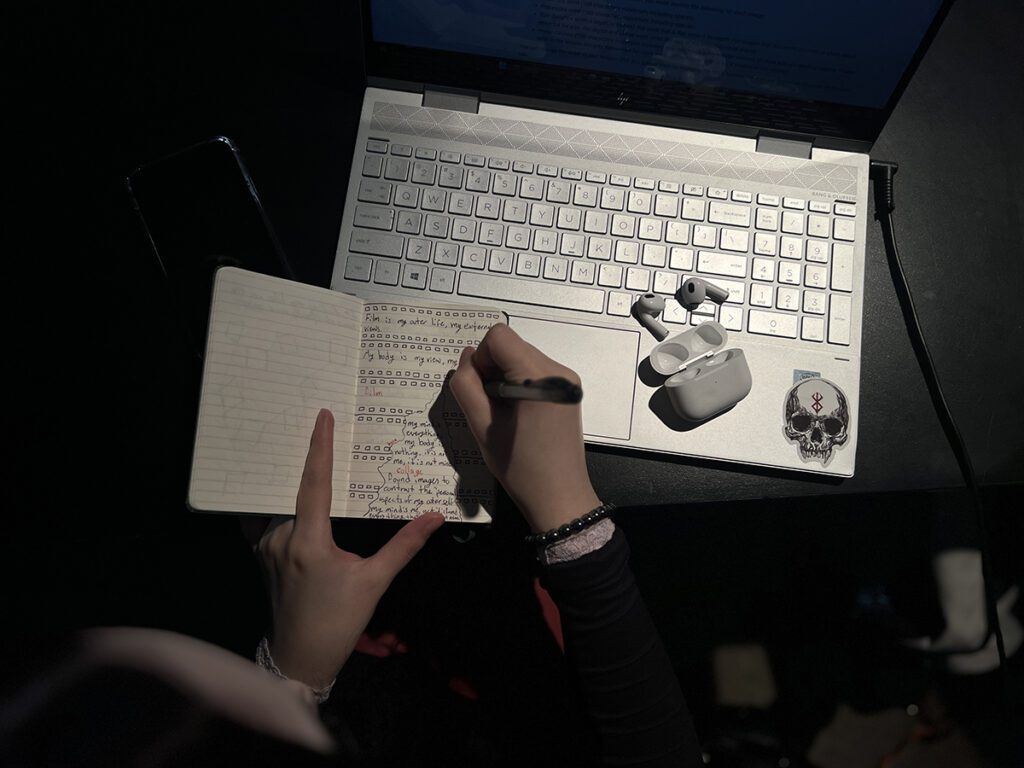
What is poetry?
Poetry is writing in a condensed form that can evoke a range of emotions. Poems can express feelings, share ideas, and create imagery. A similar process in the art classroom is visual journaling. Visual journaling is artmaking in the confines of a sketchbook page that can also raise a range of emotions. Visual journaling is a process that helps the artist work through questions, reflect, ideate, and experiment. If you teach an advanced art course, chances are, you’ve had them do visual journaling to guide their IB Process Portfolio or AP Sustained Investigation. Since poetry and visual journaling go hand-in-hand, why not incorporate poetry into your curriculum?
How does poetry boost the artistic process?
The compressed form of poetry prompts students to be intentional about their word choices, much like selecting the most appropriate elements of art in a composition. It challenges students to put words to their ideas which strengthens communication skills and improves vocabulary. It can also help students describe and analyze artworks in more depth. Poetry encourages students to think outside of the box and explore new perspectives and modes of conveying information. In many advanced-level art curriculums, the process of how students arrive at their final artworks is equally as important as the finished product. Poetry is a good processing tool to help students enhance the conceptual meaning or narrative of their artwork and promote student voice.
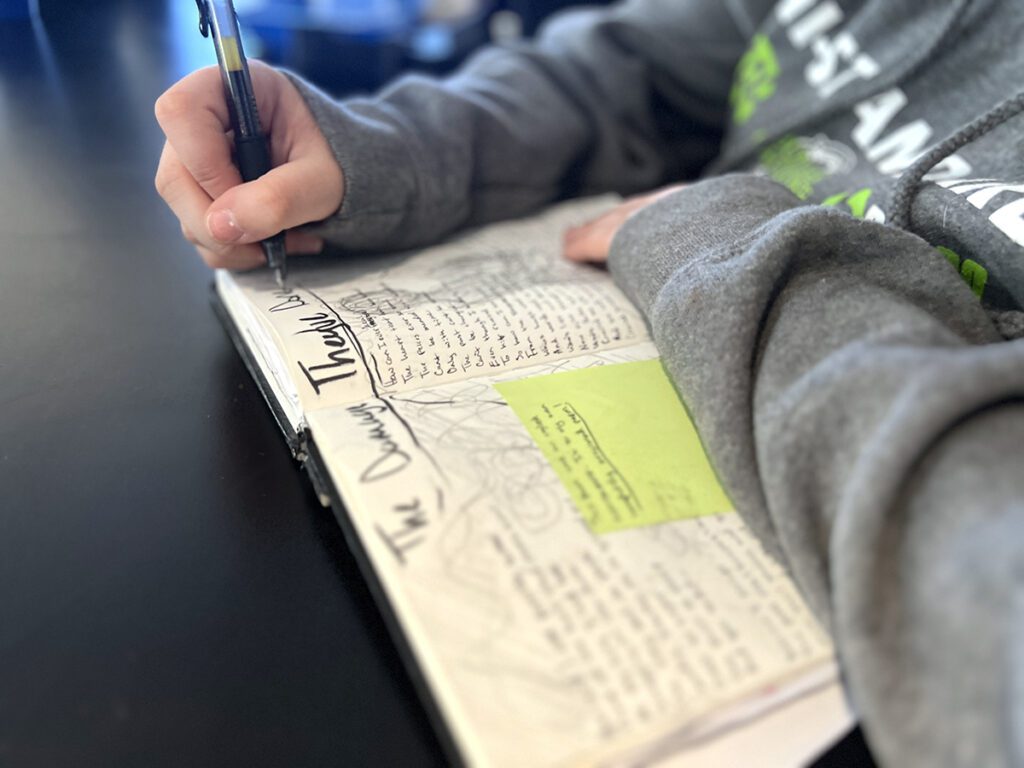
How do I start implementing poetry?
First, inspire students by showcasing the works of artists who integrate poetry and text into their artworks. Instead of reinventing the wheel, save time and energy by downloading each artist’s bio from FLEX Curriculum. Artist bios are student-facing handouts written at an eighth-grade reading level. Each includes a photo, a list of notable artworks, a quote, and a short blurb about the artist. If you’re interested in getting artist bios for your students, fill out this brief form to get more information.
Here are a few must-know artists to share with your students:
- William Blake was an English poet who intertwined intricate etched illustrations with poetic verses.
- Cy Twombly was an American painter known for his gestural and expressive style that incorporated poetic and literary references.
- Frida Kahlo was a Mexican artist who not only created personal paintings but also wrote poetry.
Next, gather a range of supplies that students can play with, similar to visual journaling. Students can add printed text from magazines and newspapers to create surface texture or a few keywords for a focal point. Stencils, stamps, paint pens, gel pens, and calligraphy pens are also great options to pull out for a poetry day!
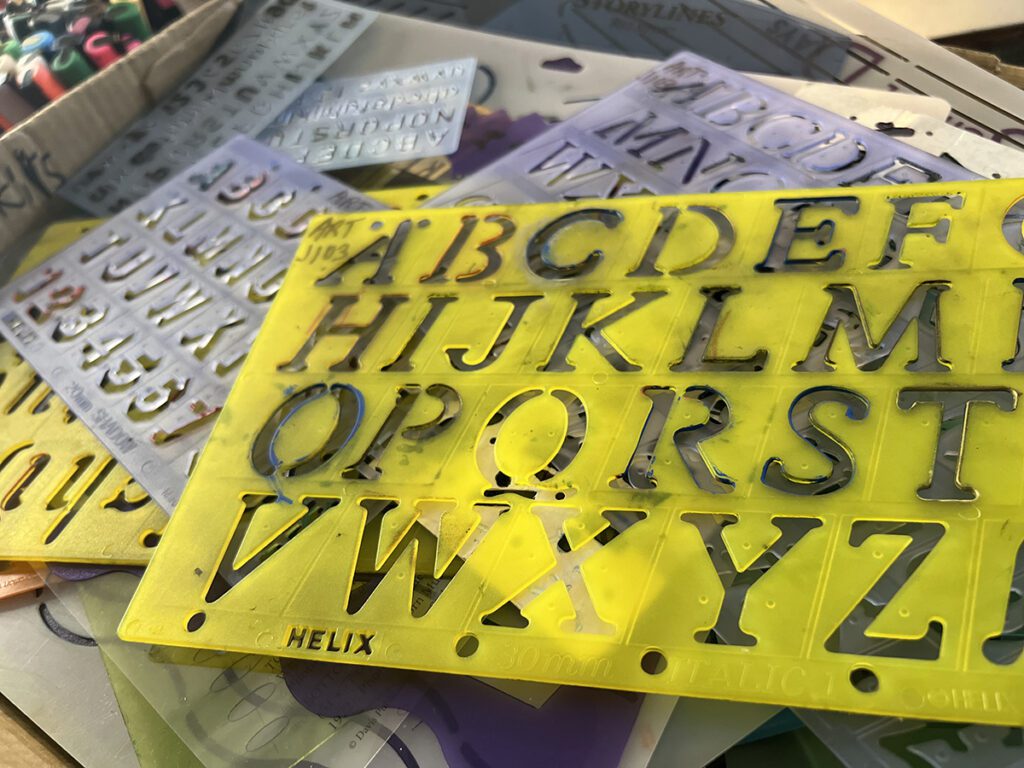
Are there any poetry activities my students will love?
Absolutely! Advanced students appreciate poetry because it gives them a tangible starting place and helps them when they’re feeling stuck. Whether your students are in the brainstorming phase or want to dig deeper into their body of work, the three tried and true activities below will get your students moving. They can work as a full lesson to create an original artwork or simply as an exercise in an existing lesson.
1. Six-Word Memoir
This activity is a perfect way to get your advanced students thinking about their artistic voice and the meaning behind their artwork. Not only does the activity tap into their interests, but it also provides them with numerous personal ideas for artwork.
- Fill up a page with as many descriptive words about the writer as possible in 2-3 minutes.
- Circle three of the words that stick out. These words should spark an idea or important story.
- Select one of the three words to free-write about for at least three minutes.
- Synthesize the writing passage down into a six-word phrase.
- Use the phrase to inspire a new artwork.
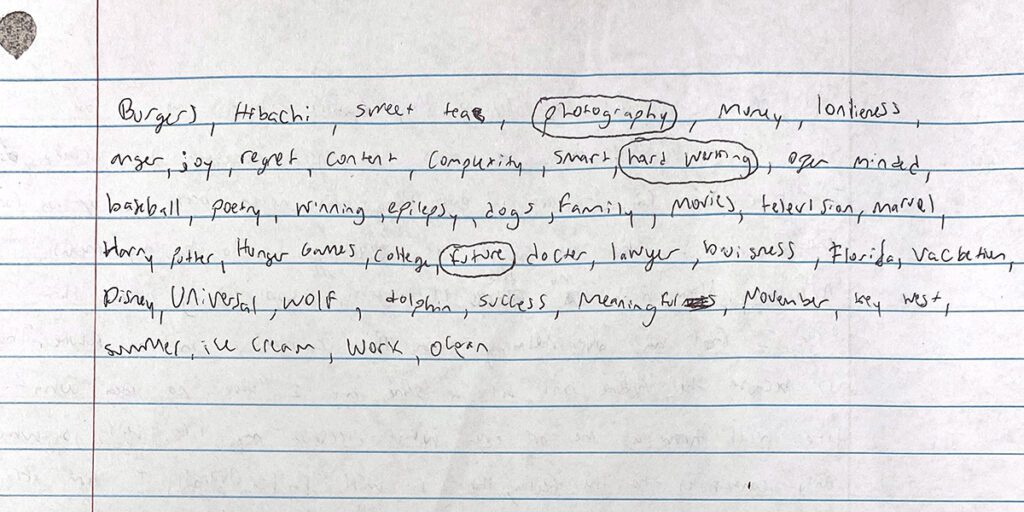
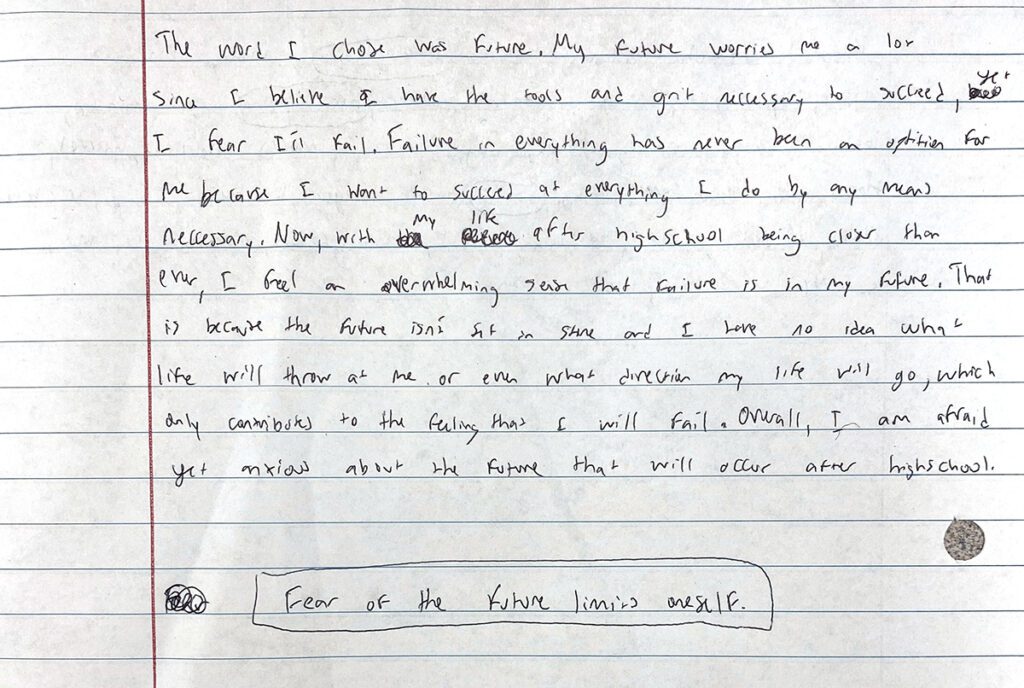
2. Six-Word Memoir Mind Map
Create a mind map from the six-word memoir activity to take this one step further! This exercise helps students organize their thoughts and results in a solid artifact to document their process.
- Copy the six-word memoir in the center of the sketchbook or visual journal.
- Draw 4-6 small lines branching out from the center phrase.
- Write a different sub-topic or theme that relates to the six-word memoir.
- Draw 2-3 small lines from each sub-topic.
- Write additional themes that relate to the connecting subtopics.
- Select themes or words from the mind map as inspiration for new artworks.
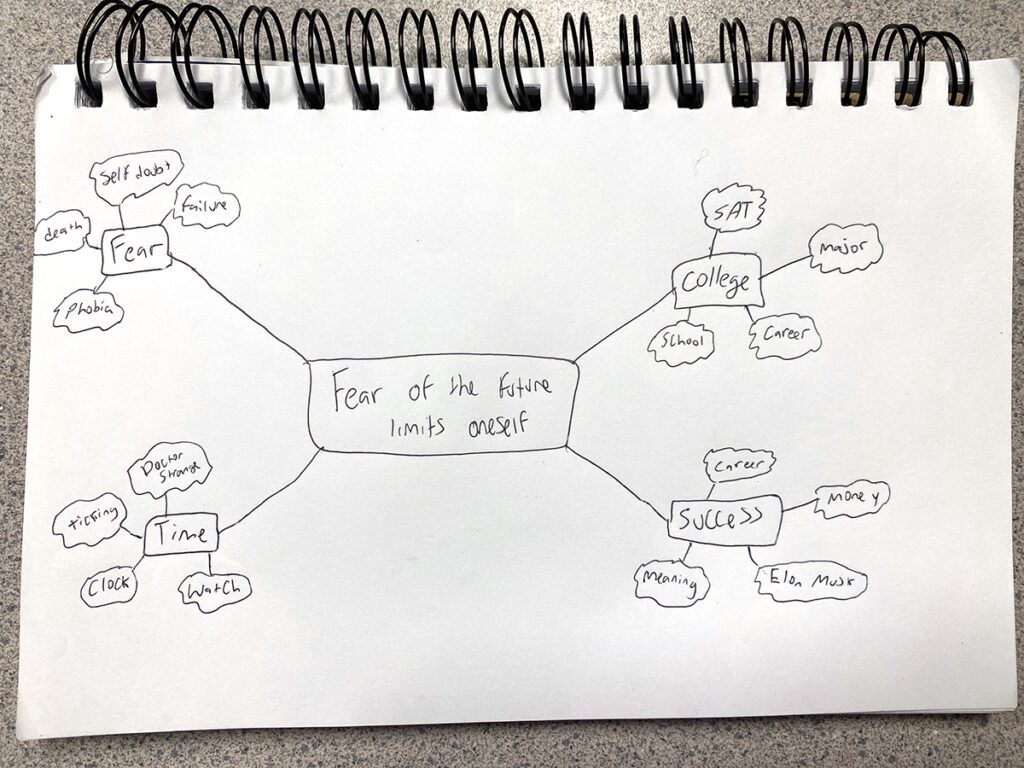
3. Haiku Illustrations
Haikus are three-line poems and are a great opportunity to work collaboratively with your English department! Here are some of the many ways to use them in the art room:
- Illustrate a haiku of choice or portray the same haiku as a class to showcase unique interpretations.
- Craft a haiku about an admired artist or artwork to condense takeaways down to the most essential.
- Write a haiku about an idea or artwork to make thoughts and visuals concrete. This can lead to a breakthrough when students can’t come up with a title for an artwork!
- Compose haikus about a personal body of work to connect the dots and pinpoint areas that need more cohesion.
- Jot down haikus about a peer’s artwork or body of work to tell the original artist if they were successful in conveying their intent.
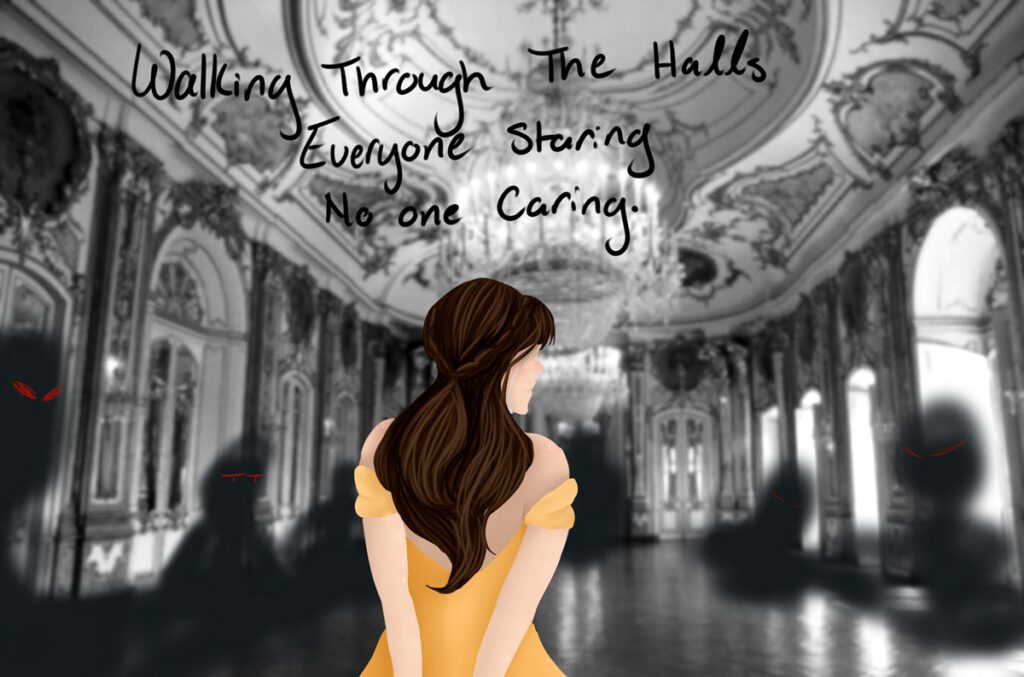
Bringing poetry into the advanced art room allows students to enhance their creative process and amplify their artistic voice. Poetry, like visual journaling, guides students to explore their thoughts, emotions, and experiences with a tangible activity. Activities like the Six-Word Memoir, the Six-Word Memoir Mind Map, and Haiku Illustrations can help students refine the meaning behind their artwork and capture intentional words to communicate their concepts. Plus, these poems will provide students with the words to say so you won’t hear “I don’t know why I made it. I just did.” anymore!
Who are your favorite visual artists that use poetry?
What’s the most interesting way a student has incorporated poetry into their artwork?
Magazine articles and podcasts are opinions of professional education contributors and do not necessarily represent the position of the Art of Education University (AOEU) or its academic offerings. Contributors use terms in the way they are most often talked about in the scope of their educational experiences.
